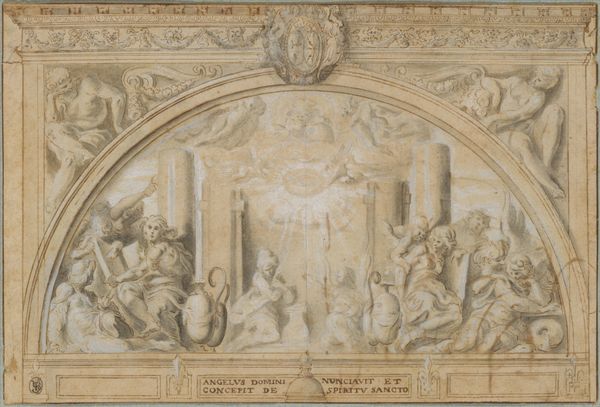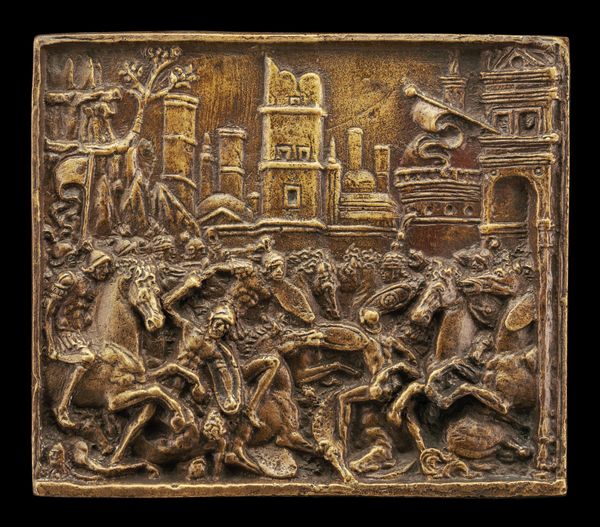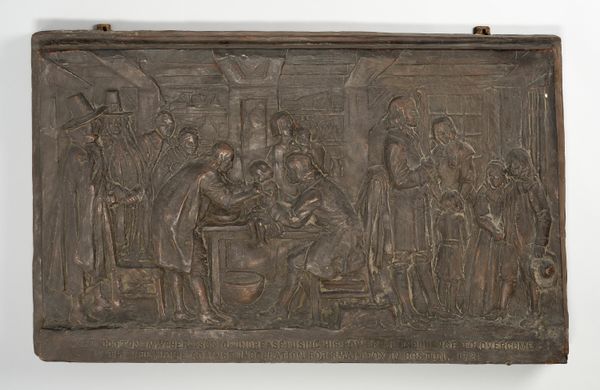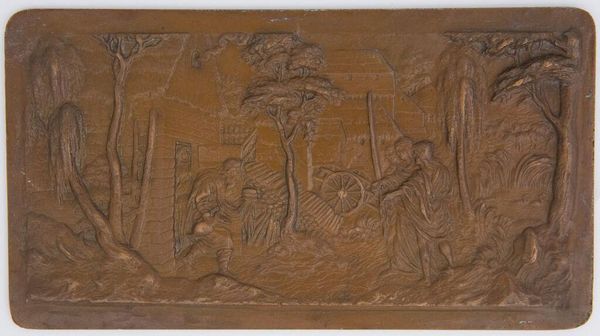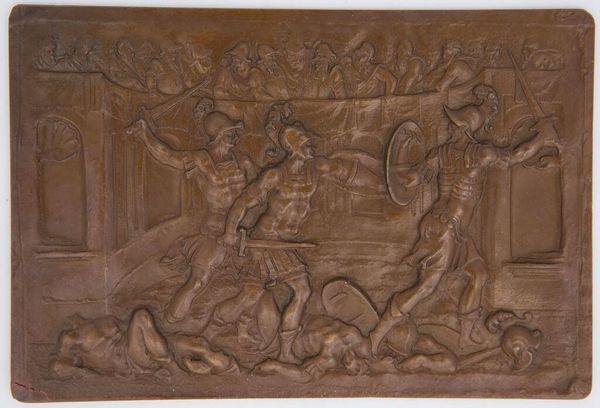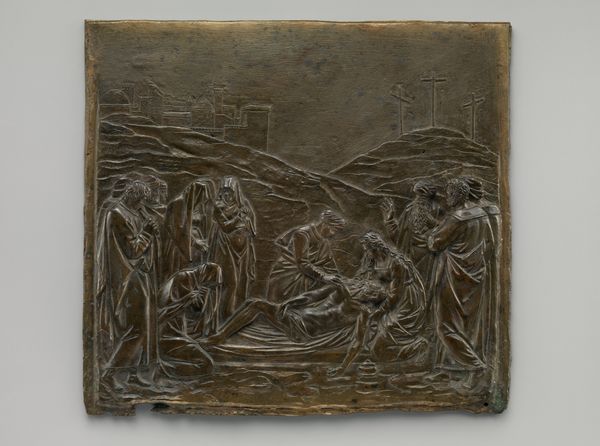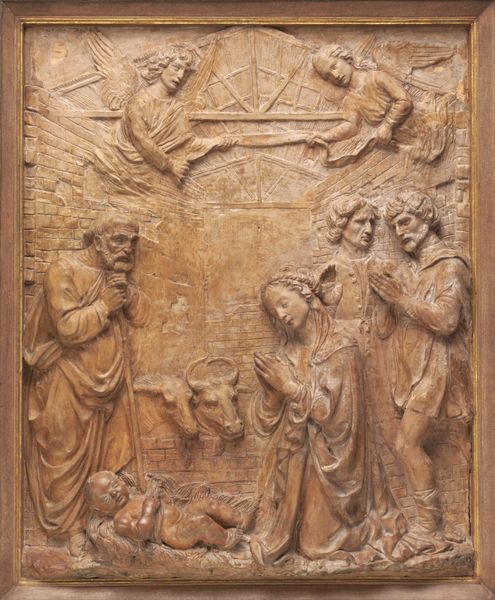
Phalaris and the Bull of Perillus 1590 - 1600
0:00
0:00
relief, bronze, sculpture
#
narrative-art
#
relief
#
bronze
#
mannerism
#
figuration
#
oil painting
#
sculpture
#
history-painting
#
academic-art
Dimensions: 27 × 34 1/2 in. (68.6 × 87.6 cm)
Copyright: Public Domain
Curator: This bronze relief, “Phalaris and the Bull of Perillus” by Giovanni Battista Caccini, created sometime between 1590 and 1600, presents a grim episode. The work is currently housed here at the Art Institute of Chicago. Editor: Bronze is so perfect for this gruesome story. It lends a weight and permanence that mirrors the heavy themes being represented. The scene has a distinct pall about it, amplified by the dark patina. Curator: Indeed. Caccini’s piece portrays the legend of Phalaris, a tyrant who commissioned Perillus to create a bronze bull for executions, the cavity within of which a victim would be roasted alive; it’s dense with potent symbolism. The bull, of course, becomes a perverse icon of power and cruelty, a symbol of dehumanization. Editor: Thinking about its production…the bronze casting would’ve involved a lost-wax method, an elaborate process connecting the initial design to the brutal reality represented. The act of molding and firing—the sheer physical labor required—brings into sharp focus the way objects can become enmeshed with human intention, for both creativity and violence. Curator: Precisely, we have the Mannerist style contributing to this density as well. Look at the exaggerated poses of the figures, heightening the emotional drama. The composition directs the viewer to consider ideas of justice, retribution, and the corrupting influence of power. Editor: And just consider the societal function such a piece served! Bronze wasn't a readily available material, so someone with authority and means was investing in and showcasing this kind of spectacle to... whom? Other powerful patrons, perhaps? Or to instruct the common population via fear? Curator: It definitely prompts questions about the values held by its commissioners and early viewers. What function did images of cruelty like these hold? The relief doesn’t simply depict violence; it compels reflection on our darkest impulses. Editor: Well, reflecting on how art objects—even beautifully crafted ones like this—are always interwoven with threads of human behavior—whether of craftmanship or acts of brutality— gives this piece a strange and troubling power even centuries later. Curator: For me, it becomes a potent visual memory of humanity's capacity for both invention and barbarity, a continuous negotiation of who we are.
Comments
No comments
Be the first to comment and join the conversation on the ultimate creative platform.
